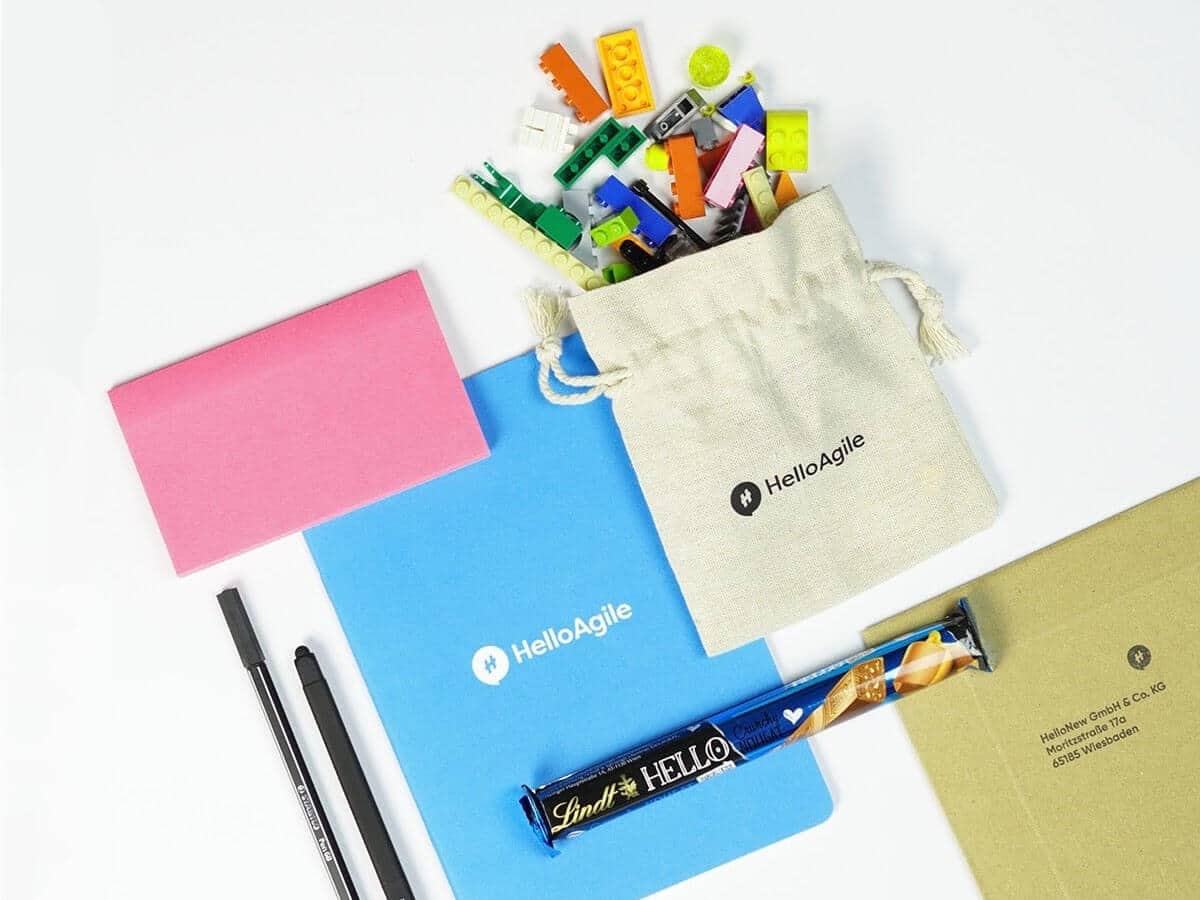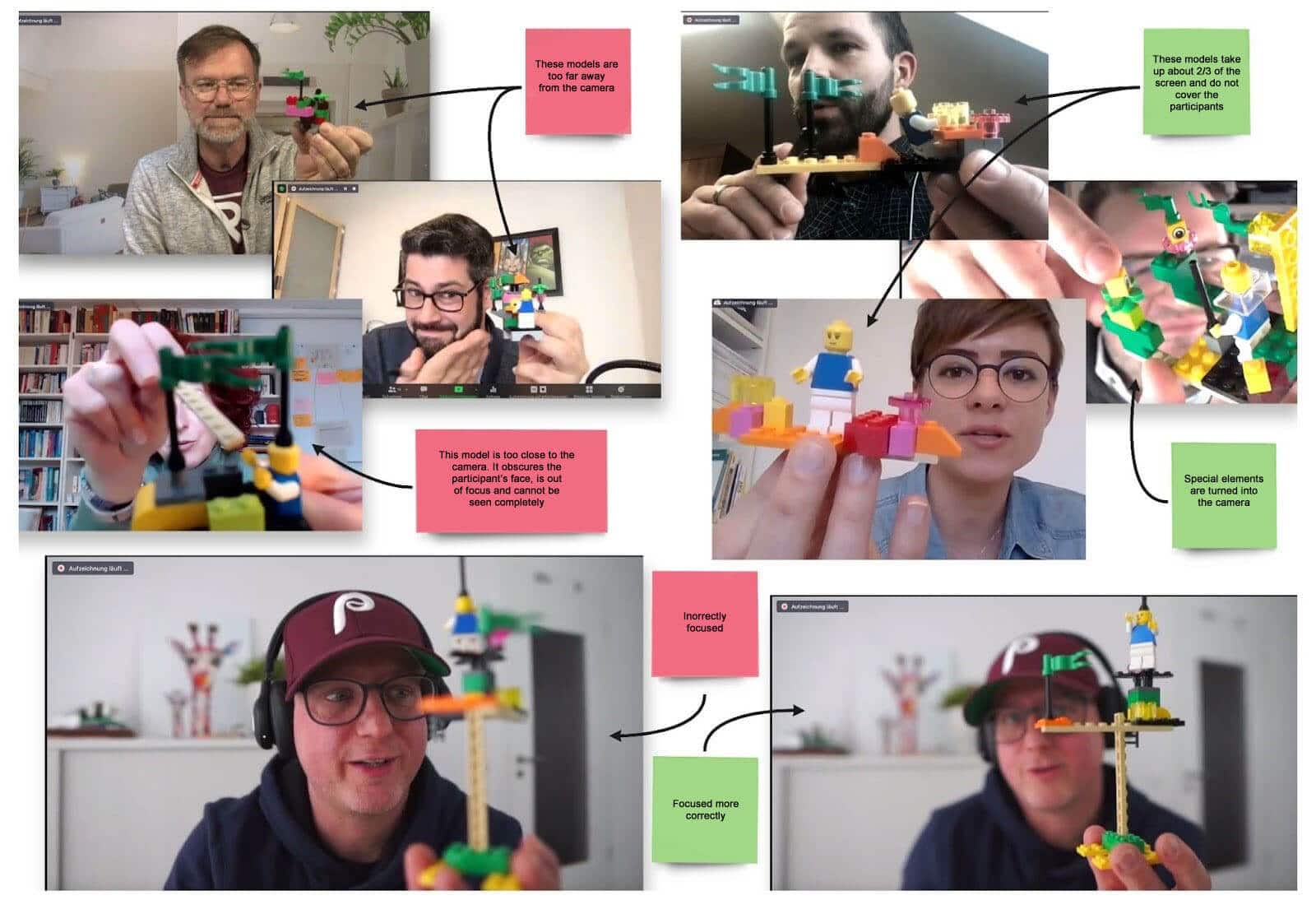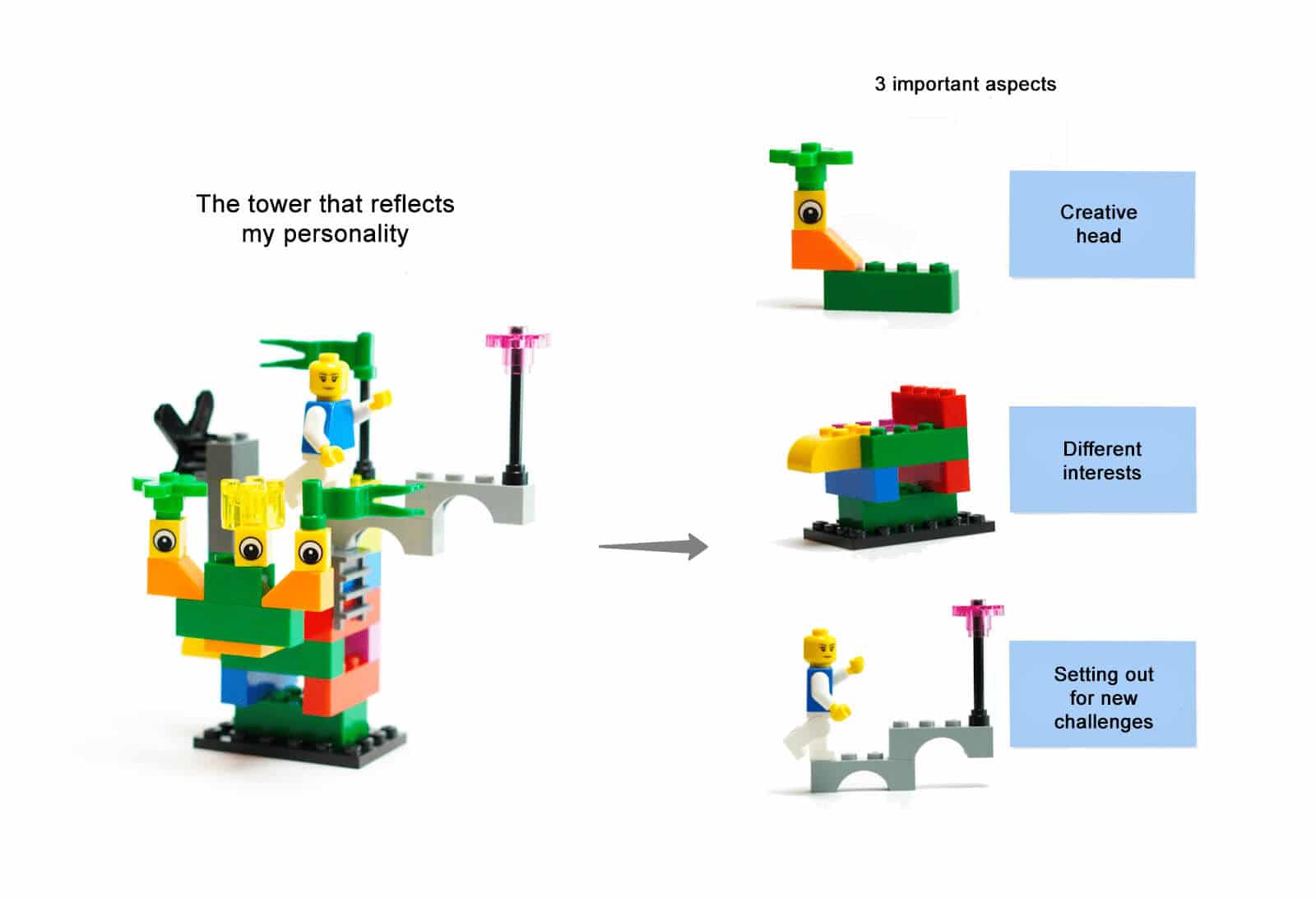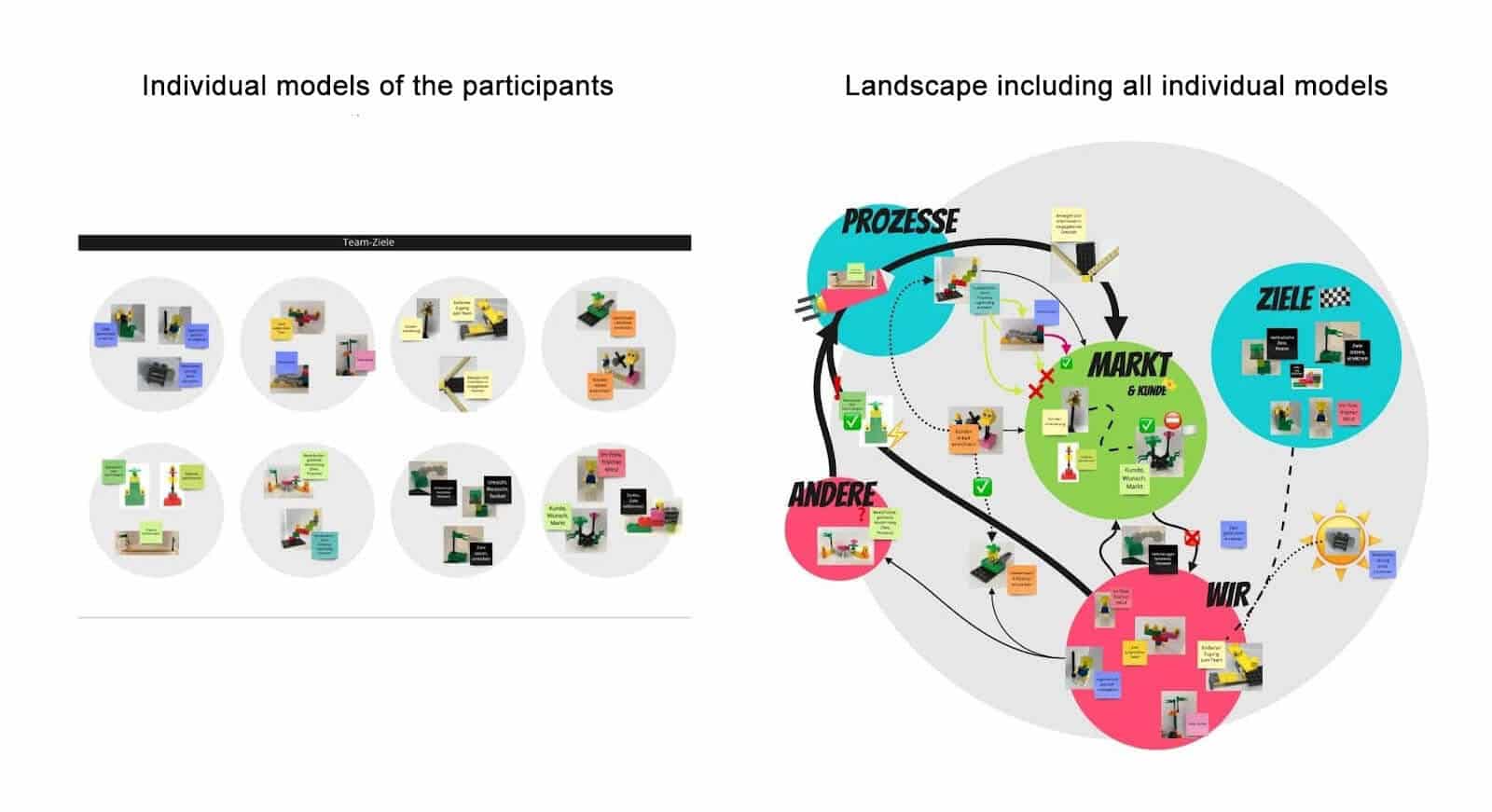Team culture in the home office with Lego Serious Play
What can you do to get going again in the home office and actively work on the team culture? The Lego Serious Play method can help here. It actually thrives on interaction and the joint construction of thought models in physical space. But with the advent of the home office era, the method has also evolved and, with a few adjustments, has made the leap into the digital space. The path remains the same, only the medium changes.
The Lego Serious Play method brings the toy box into the business context and helps teams and companies visualise complex issues and develop a common understanding. The method can be used, for example, to develop marketing strategies, make process flows tangible or even develop a team culture. Especially in the digital version, the Lego Bricks bring a welcome change to the desk at home and a workshop playfully strengthens team cohesion while valuable results are achieved. You can find out how this works in practice in this article (and in more detail in my German-language book).
Preparation
As usual in the digital space, the online workshop needs to be prepared much more thoroughly than the offline version. Both the facilitator of the workshop and the participants need skills in using digital tools such as Zoom as a video communication tool and Miro or Mural as a digital whiteboard. The reason for this is obvious: distributed teams cannot easily build a common Lego model. For this purpose, digital tools are used in the online workshop. Nevertheless, the participants start “analogue” and receive material for building in advance, for example a Lego-„Serious Play“ Window Exploration Kit. Of course, there is nothing to be said against something to write with and something to snack on, as in this example of a shipping box.
Individual building phase
Regardless of the method of implementation, the main part of each Lego “serious play” workshop begins with the construction of the individual models. In the online format, the most obvious tasks are related to cooperation in the home office and team culture (although of course all other complex issues are also suitable). For example, all participants start by building a thought model of the measures they would take to achieve more team spirit in the home office. The answer is shared with all the others via webcam. To ensure that everyone recognises the model, it should fill about 2/3 of the picture and be sharp. Once all participants have shared their models and understood their meaning, the next phase of the workshop begins.
Digitise models
The next step is exciting. Because now comes the digitisation. For this, the models are again partially disassembled in the first step. In most cases, the thought model contains not only one answer, but many ideas and aspects that need to be prioritised in preparation for the group model. The participants break down the model so far that only the three main aspects of the respective model remain. In the following example picture, the single model of a participant’s greatest strengths is broken down into its three most important components, which are briefly described. The descriptive text remains assigned to the picture later on.
Group building phase: the digital landscape
The rest of the workshop now takes place in digital space and on the digital whiteboard. The following task is simple: “Create a landscape from the individual models. Place them according to their dependencies on each other”. One participant starts and places a digitised element on the white space provided. The other models are then placed in turn, as it makes sense for the participants. Interdependencies, interactions and connections between the various aspects are represented on the one hand by their distance from each other, and on the other hand by the various connection possibilities available to the participants. Over time, a digital collage is created that may look chaotic to outsiders, but contains many insights for the participants.
After building the landscape, another task can follow, depending on the goal of the workshop. The process is the same as before: first build, then digitise. The digital models are then added to, which makes the landscape larger and can, for example, be supplemented by external influencing factors such as the corporate culture or the influence of management.
At the end, there is the transfer to reality. For this purpose, it is a good idea to distribute digital points to the participants, which are used to coordinate and prioritise the most important topics. A note is written for each point, and the most important findings of the landscape are already transferred into practice and can be reformulated and tackled from there in measures and tasks.
Conclusion: Working on team culture online
Yes, it is possible to work on team culture online with Lego Serious Play. Of course, the participants cannot create a common, haptic model in an online workshop, but with the aids mentioned and the procedure described above, a common thought model can be created that is ideally suited for developing the team culture together. Just try it out.
Notes:
Would you like to find out more about how you can use Lego Serious Play to drive your business forward and solve major challenges in a playful way with the help of small bricks? Or are you interested in a facilitator training programme? Then take a look at HelloAgile’s German Lego Serious Play programme. There you can find out all about the method and how to use it in practice – also online.

David Hillmer
David Hillmer is a Lego Serious Play trainer and author, CEO at HelloAgile and lecturer in entrepreneurship, and podcaster at Unboxing Agile. His mission is to help people, teams and companies operate at eye level, celebrate rather than punish mistakes, and see, learn and embrace change.



